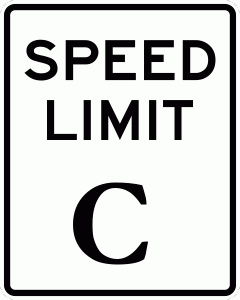The need for raw speed in the financial vertical has apparently evolved to the point where wireless transport may find wider usage. According to this article, which a friendly reader pointed out to me over the holiday weekend, wireless gear is increasingly being marketed for its low latency advantages. In fact there is one firm, McKay Brothers, that says it is building a wireless NYC-Chicago link that will best the ultra-low latency fiber build of Spread Networks.
 Wireless brings two big advantages to the latency game. First, the signal travels significantly faster. In glass light travels at only about 2/3 the speed of light in a vacuum, while in air the difference is relatively negligible. Second, the signal doesn’t have to travel along rights of way and can therefore go practically in a straight line – or more accurately along a great circle hugging the surface of the Earth with stations every 40 miles or so. NYC-Chicago is just a little over 700 miles as the crow flies, and hence there are a significant number of milliseconds that can therefore be shaved off, in theory.
Wireless brings two big advantages to the latency game. First, the signal travels significantly faster. In glass light travels at only about 2/3 the speed of light in a vacuum, while in air the difference is relatively negligible. Second, the signal doesn’t have to travel along rights of way and can therefore go practically in a straight line – or more accurately along a great circle hugging the surface of the Earth with stations every 40 miles or so. NYC-Chicago is just a little over 700 miles as the crow flies, and hence there are a significant number of milliseconds that can therefore be shaved off, in theory.
But there are drawbacks of course. It is expensive, which means the economics behind those extra milliseconds or nanoseconds have to be not just very good but sustainable. And it doesn’t scale well to high bandwidth throughputs, both because of underlying technological and spectrum limitations. There’s only so much spectrum, and the wavelengths that are good for carrying lots of data don’t travel as far or through objects or bad weather as well. And if you’re pushing the limits for latency you’ll be cutting a few corners on reliability.
That’s why you mostly see wireless links over shorter distances in the metro, where the latency advantages are the greatest and the limitations are less limiting, or in far flung locations where fiber is simply not available. Nevertheless, the sustained interest in having the very lowest latency from the high-speed trading industry may have brought the necessary conditions into play for such a NYC-Chicago route to be feasible. If you can use it just for the data that really needs to get there first, and having it first makes you lots of money and is backed up by fiber – then the economics just might work out quite well.
If you haven't already, please take our Reader Survey! Just 3 questions to help us better understand who is reading Telecom Ramblings so we can serve you better!
Categories: Low Latency · Wireless





One other factor for wireless is that the electromagnetic spectrum can be seriously ipacted by solar activity in addition to terrestrial weather. Since we are coming up on a new solar maximum over the next few years, we may soon see a test of the durability and reliability of this methodology
Solar effects are pretty much a non-issue for point to point microwave links but what is a huge issue are the terrestrial propagation effects. The drivers here are generally weather related and the primary issue in most areas are path fades due to atmospheric ducting / reflections due to thermal inversions. Rain fade may also be an issue at higher frequencies.
getting to 99.95% availability on wireless is a lot easier than 99.99%
I think wireless devices fail to give 100% speed efficiency when compare with wire devices in some sectors like broad band .i am very sure coming tread is very less but most of the cases wire devices are dependable
Actually when compared to Optical networks the spectral efficiency on wireless is now very close to the theoretical best possible as dictated by the Shannon-Harley theorem.
There are 2 issues that wireless has to work with that are not so problematic on Optical networks.
1/ the path loss is very high since there is no guided medium between the endpoints. For example on the 7Ghz band a 30Km link has a path loss of 139 dB before you even take fade margin into account
2/ The amount of spectrum is very limited, 2x 52MHz would be fairly typical, contrast this with ITU DWDM plan for optical networks where you have 100GHz wide channels.
Looking at one of our 11GHz links here at work, 2x 52Mhz channels (one each way) which is currently running at 367Mbs (Ethernet) each way using 256QAM modulation.
If one achieved the same spectral efficiency in 1/2 of a DWDM optical channel (50GHz) you would achieve a throughput of a little over 3.5Tbs
In summary wireless does very well indeed considering it’s limitations, latency is one area where perhaps it can beat Optical on the same path , At least until hollow core fiber becomes a deployable reality.
More on the subject, employing 60Ghz rooftop:
http://www.siliconinvestor.com/readmsg.aspx?msgid=27866716
Yagotta love that pendulum.
Frank